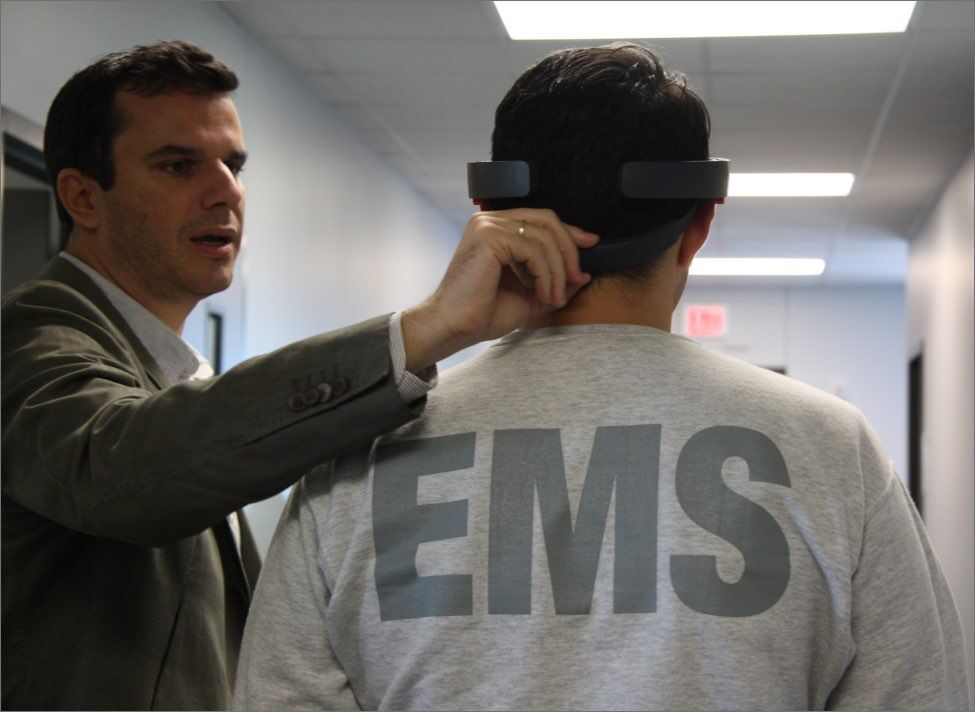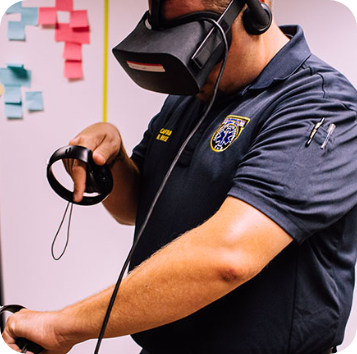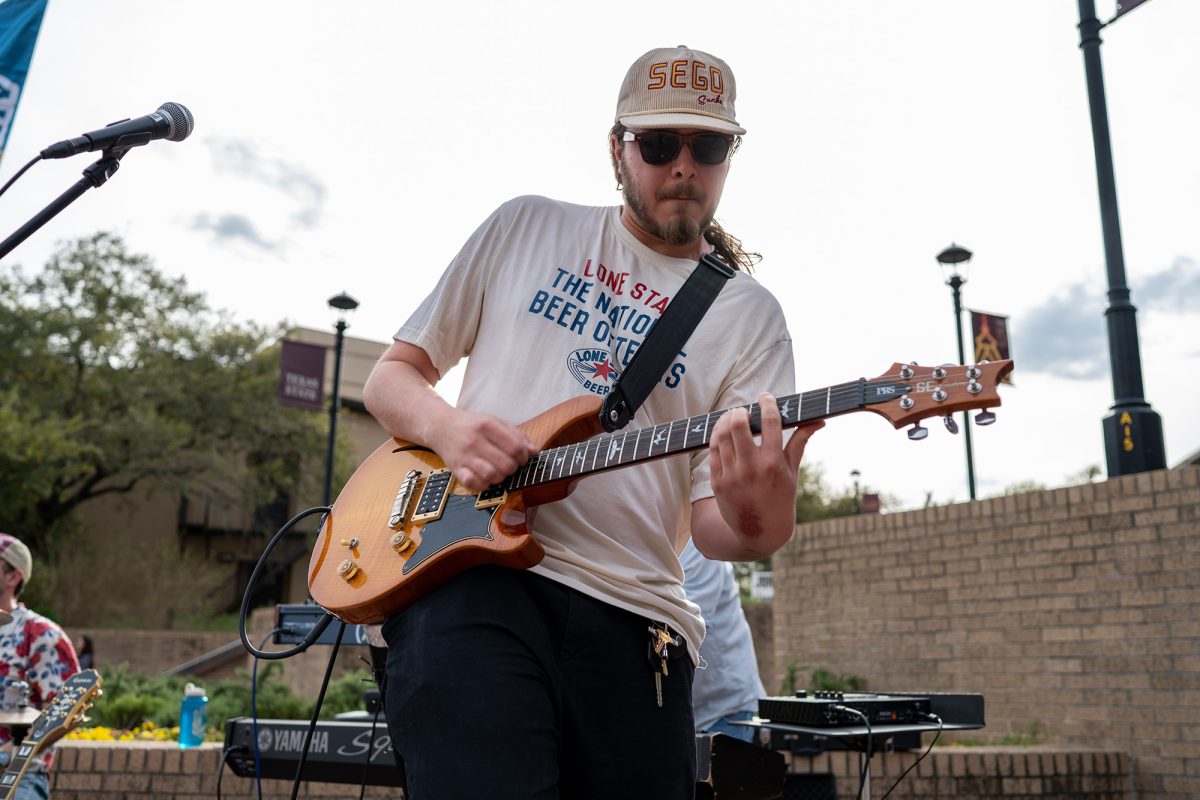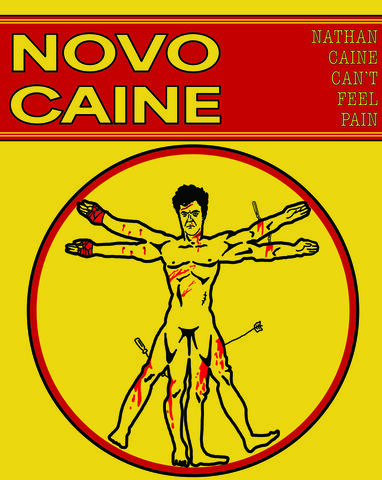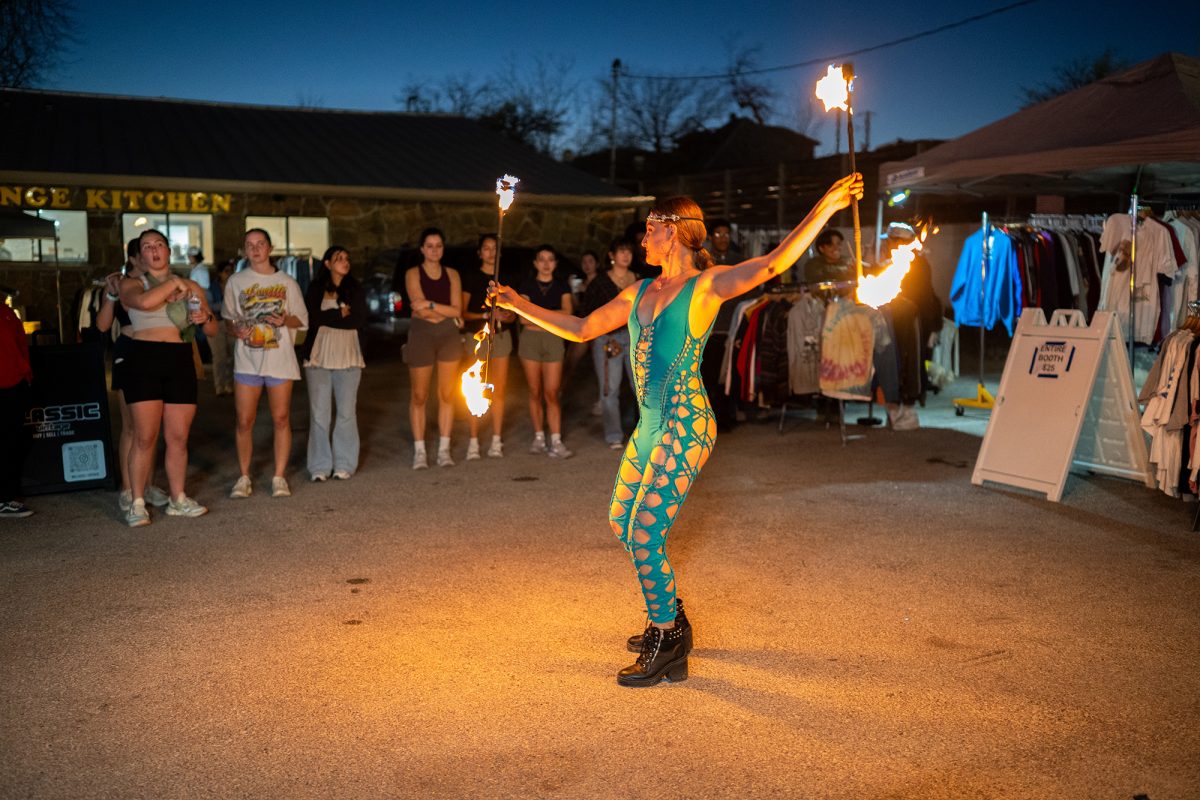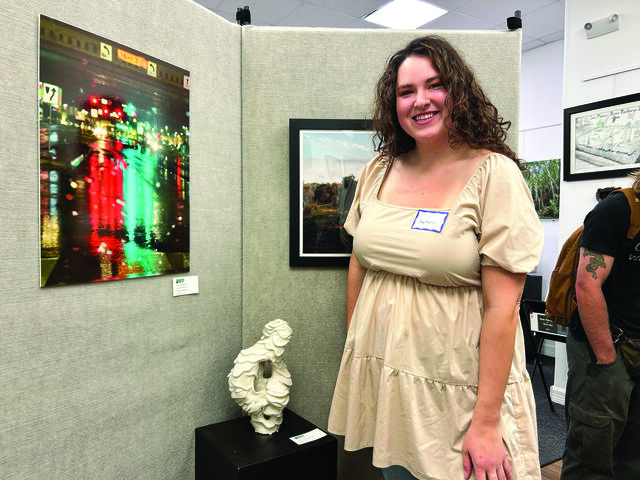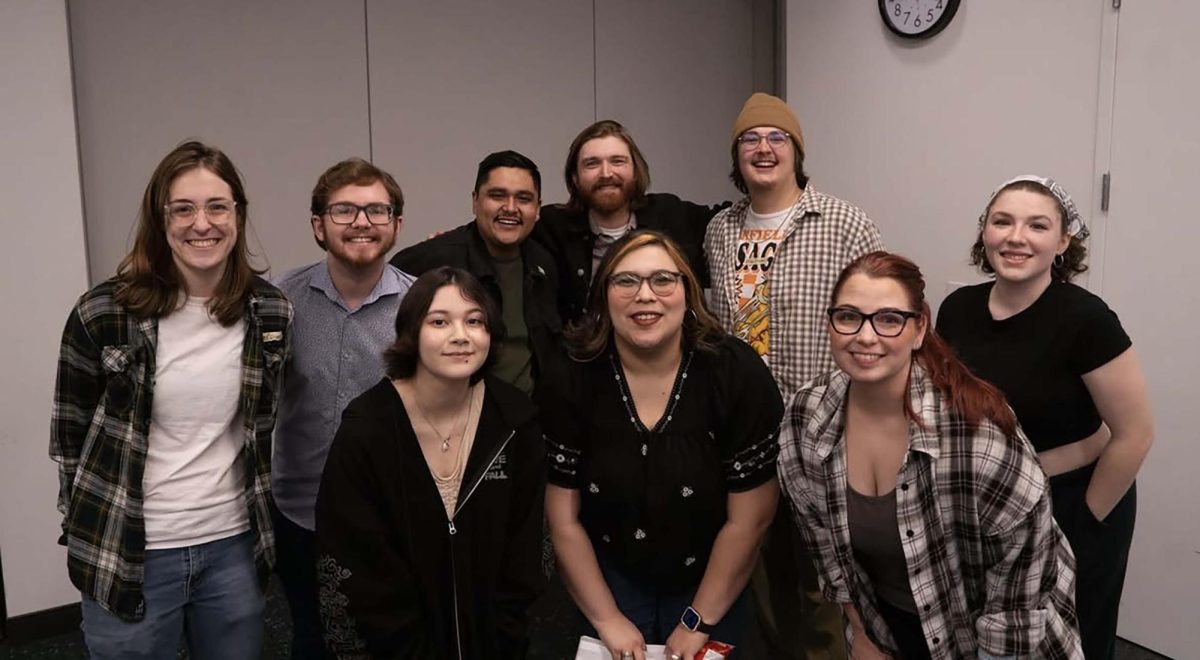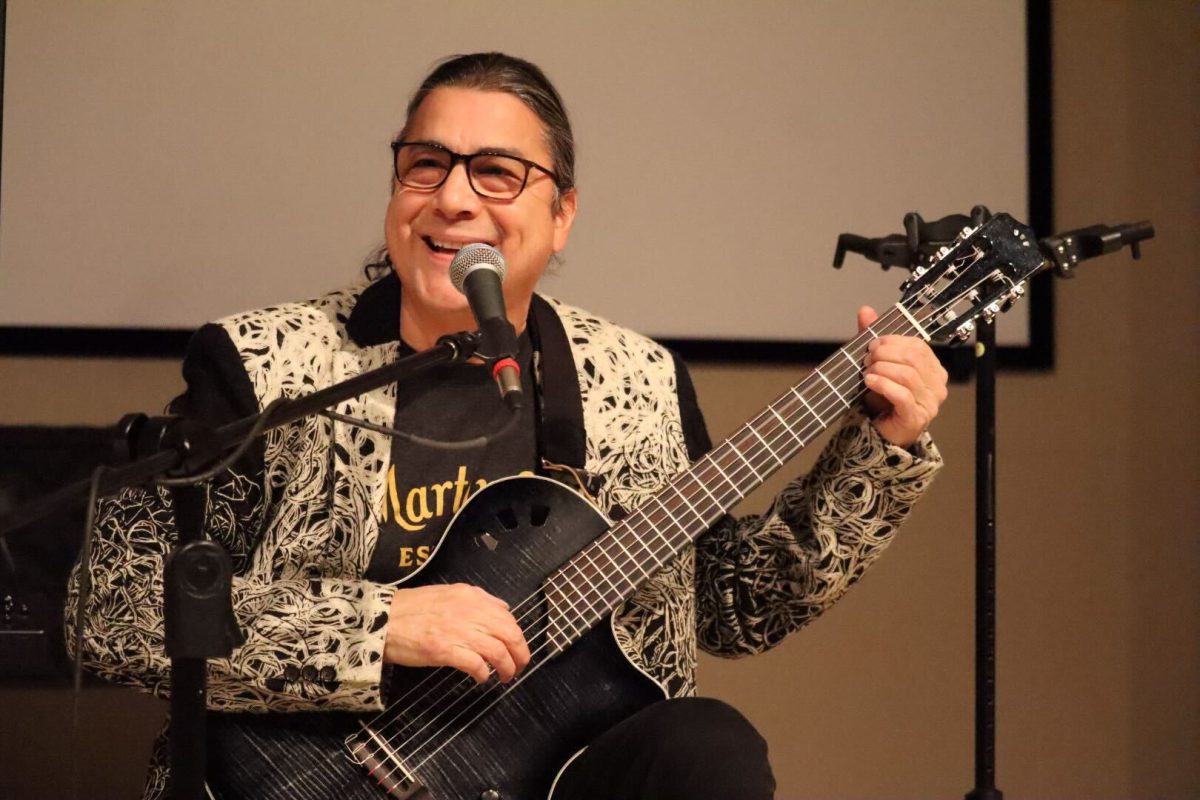As the technological era booms and virtual reality (VR) technology continues to improve, associate professors Kenneth Smith and Grayson Lawrence teamed up to discover ways in which VR technology can make an impact in clinical settings.
For the past 20 years as a licensed clinician, Smith, an associate professor in the School of Social Work, has strived within his own private practice to improve his patients’ livelihood and well-being. Now, he continues to help others by designing VR therapeutic and training systems.
“I’ve always known that that’s what I was supposed to do,” Smith says.
At the start of his exploration, Smith began to utilize the Texas State Virtual Reality (VR) Technology Lab in Derrick Hall to work with students making simulations designed to help treat addiction, demonstrate the dangers of distracted driving and provide clinicians access to radiation therapy tools.
These lab explorations soon led to a request from the Austin-Travis County Emergency Medical Services (EMS), who expressed that with only seven ambulance buses, mass-casualty ambulances, in Texas, the EMS team has had little training on how to navigate the supersized vehicle. Because of minimal training, if a disaster were to occur, the responders may not be fully prepared to operate the bus for life-saving equipment.
This request motivated Smith, partnering with Lawrence, an associate professor in the School of Art, to design a virtual type of ambulance bus for EMS training purposes.
This virtual training designed by Smith and Lawrence demonstrated the potential effectiveness of VR training. For responders who trained virtually, the training was 40% faster and had a 35% reduction in errors compared to responders that underwent traditional training.
“A first responder will get trained on these skills and then not respond to a disaster for a number of years,” says Austin-Travis County EMS Commander Keith Noble. “VR training allows us to refresh those skills quickly, without needing the physical equipment or set-up. We can do the training at the station or at home and can repeat the training over and over.”
After the success of his ambulance training, Smith saw a need for cheaper, more accessible and effective crisis training statewide and founded Augmented Training Systems (ATS), a company dedicated to designing training simulations for therapeutic and essential services, like EMS.
“The unfortunate reality is these large-scale events are happening more often. School shootings are happening,” Smith says. “EMTs, firefighters [and] police officers need to be well trained to handle a mass casualty event.”
According to the ATS website, training can be implemented at a 90% reduction of the original cost of traditional moulage-style training, and 82% of Austin EMS cadets felt more confident in tests after the training. Due to these advantages, Austin-Travis EMS has continued to commission training designs from ATS, including a triage simulation.
Since starting its ambulance training, ATS has provided numerous training simulations for different organizations, including crafting a virtual grocery store to help veterans with post-traumatic stress disorder (PTSD).
For people with trauma, like PTSD, everyday noises, lights and crowds are potentially triggering. ATS’ grocery store stimulation, instead, replicates those stressful environments without the in-person consequences. This allows veterans to practice coping with different triggers, eventually helping them build the confidence to return to those spaces.
ATS’ VR technology also allows users to monitor their timing during exercises and track their errors, helping ATS observe how its users absorb the information through the technology. ATS uses this to find problems in the training and make improvements, constantly looking to grow its tool.
“You can train in a VR simulation a lot more often with a lot more return on investment because you understand how people are performing in that space, whereas these live trainings are very large, very costly and you really have very little understanding about how people perform in them,” Smith says. “The VR simulation will allow you to train any day and every day if you wanted to.”
Lawrence, who works with ATS to design simulations, credits the company’s success to the immersive quality of the VR technology. VR places the individual entirely within an interactive scenario, providing a more realistic, hands-on and engaging experience.
“The nice thing about VR is that it’s a lot more immersive than 2D,” Lawrence says. “With VR, it’s more like you’re in it, and that you’re part of this cacophony of sights and sounds and even touch.”
Looking ahead, Smith believes VR technology will revolutionize how people learn, especially as the technology becomes portable and the demand for virtual education skyrockets.
“The computer simulations have gotten so advanced now. [With] the Oculus 2, [a VR system], you don’t even need a computer, it’s just a standalone headset,” Smith says. “You can imagine a YouTube channel of VR training. Yeah, I mean it’s going to revolutionize training.”
Categories:
Professors develop VR crisis training to aid first responders, trauma survivors
Andie Mau, Life and Arts Reporter
May 11, 2021
0
Donate to The University Star
Your donation will support the student journalists of Texas State University. Your contribution will allow us to purchase equipment and cover our annual website hosting costs.
More to Discover



